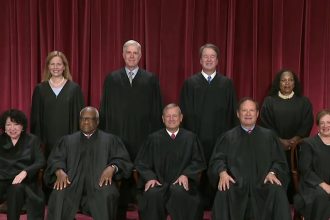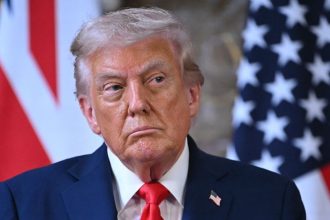When the federal government ran out of money on Oct. 1, the consensus in Washington, D.C., was that it was likely the start of one of the longest shutdowns ever. Those predictions have proven to be true.
More than a full month later, the government remains shut down, and the dynamics in Congress that led to the standoff in the first place are essentially unchanged. Republicans still need a handful of votes from Democrats to get any plan to reopen the government through the Senate. Democrats still say they’ll only let a funding proposal pass if it satisfies some of their policy priorities, a demand the GOP has fully rejected.
Monday marked the 34th day of this shutdown, one day short of tying the record for longest ever. If it stretches into Tuesday, it will match the 35 days that the government was shut down during President Trump’s first term in the White House. It became the second-longest shutdown more than a week ago when it surpassed the 21-day standoff that occurred in 1996 during Bill Clinton’s presidency.
This is already the longest “full” shutdown in U.S. history, in which the entire federal bureaucracy has run out of funding. During the last shutdown, some parts of the government — most notably the military — were unaffected.
What has happened so far?
Very little has changed since the shutdown began. Congressional leaders of both parties have remained steadfast in their positions, and there have been few signs of substantive high-level negotiations to reach a deal.
There has been zero action at all in the House of Representatives, which has been on recess since Sept. 19. The Senate has been meeting regularly, but only to hold repeated votes on a short-term funding bill that would temporarily allow the government to reopen. As of Friday, that proposal had been brought up and rejected 13 separate times.
On Oct. 30, President Trump called on Senate Republicans to use the “nuclear option” of overriding the filibuster, but that idea doesn’t appear to have much support within the GOP caucus.
Presidents, including Trump during his first term, typically take an active role in negotiations to reopen the government. That hasn’t been the case this time around.
Trump has been largely absent from the day-to-day developments on Capitol Hill, allowing House Speaker Mike Johnson and Senate Majority Leader John Thune to be the voice of the GOP on the shutdown. He reportedly hasn’t spoken to Democratic leaders at all since the shutdown began.
Where do things go from here?
Recent ongoing bipartisan discussions have raised some hope that an agreement to temporarily reopen the government could be reached as soon this next week. But those conversations are subject to the same partisan tensions that have stood in the way of a deal so far.
Since the start of the shutdown, Democrats’ No. 1 demand has been to extend Obamacare subsidies that are set to expire at the end of this year. Open enrollment began Saturday, and with Americans seeing sharp increases in the cost of health care plans for next year, the political dynamics around this specific sticking point may change when lawmakers return to Washington this week.
Political pressure may also start to increase when more than 40 million Americans miss out on benefits through the Supplemental Nutrition Assistance Program, or SNAP. The future of those benefits is currently uncertain in the wake of a pair of federal court rulings ordering the Trump administration to distribute them.
Benefits that were supposed to be distributed on Saturday did not go out, resulting in long lines at food banks across the country.









